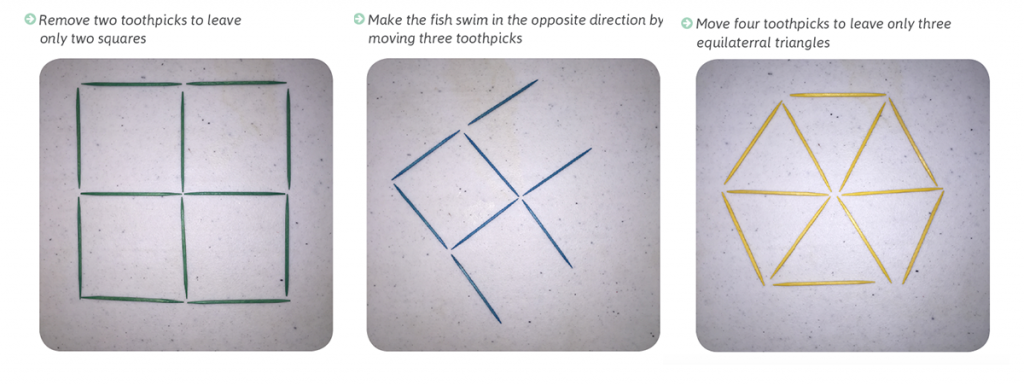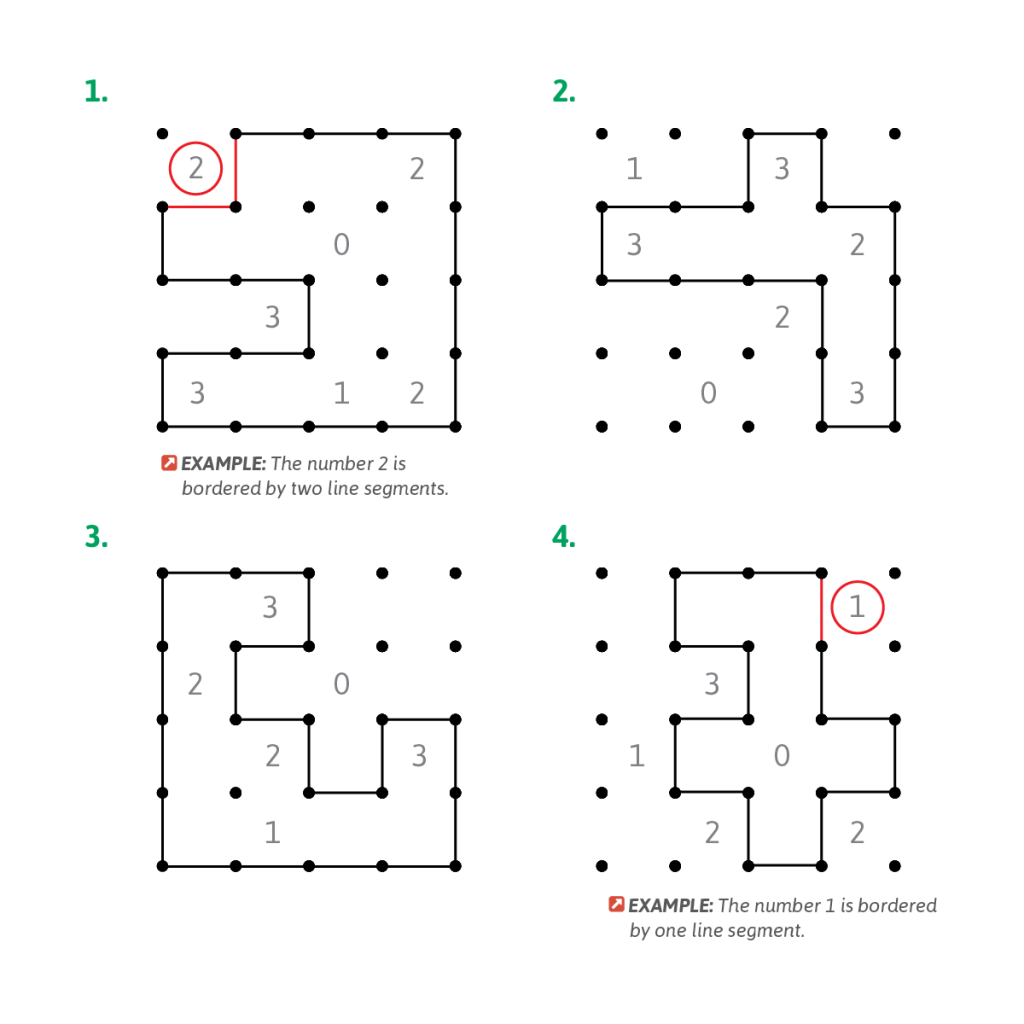
A problem is simply a “problem” because there is no immediate, known solution. Problem solving activities in mathematics extend well beyond traditional word problems.
You can provide your student with activities that promote application of math skills while “busting boredom” at the same time! Puzzles and riddles, patterns, and logic problems can all be valuable exercises for students at all levels of mathematics. By engaging in short, fun activities like these, you can help your student become a more skillful, resilient, and successful problem-solver.
When practicing problem-solving skills, be certain to give your student time to explore a problem on her own to see how they might get started. Then discuss their approach together. It is important to provide support during the problem-solving process by showing that you value their ideas and helping them to see that mistakes can be useful. You can do this by asking open-ended questions to help your student gain a starting point, focus on a particular strategy, or help see a pattern or relationship. Questions such as, “What have you done before like this?”, “What can be made from …?” or “What might happen if you change…?” may serve as prompts when they needs inspiration.
Try the activities below to boost your student’s problem-solving skills.
3 Problem-Solving Math Activities
1) Toothpick Puzzles
Toothpick puzzles (also referred to as matchstick puzzles) provide students a visualization challenge by applying their knowledge of basic geometric shapes and orientations. The only supplies you need are a box of toothpicks, a workspace, and a puzzle to solve. The goal is for students to transform given geometric figures into others by adding, moving, or removing toothpicks. These puzzles range in complexity and can be found online or in math puzzle books. As an extension, challenge your student to create their own puzzle for someone else to solve.
Sample toothpick puzzles of varying difficulty:

Download solutions to this activity here.
2) Fencing Numbers
The goal of this activity is to create a border or “fence” around each numeral by connecting dots horizontally and vertically so that each digit is bordered by the correct number of line segments.
Use pencils and scissors to cut the size grid you want to use.
This game can be modified for abilities by adjusting the size of the grid and amount of numerals written. For example, a beginning student might begin with a grid that is 5 x 5 dots with a total of four numerals, while a more advanced student might increase the grid to 7 x 7 dots with six to eight numerals.
Begin by writing the digits 0, 1, 2, and 3 spread repeatedly in between “squares” on the dot paper. Each digit represents the number of line segments that will surround that square. For instance, a square that contains a 3 would have line segments on three sides, and a square that contains a 2 would have line segments on two sides, and so on. See the example boards and solutions for a 5 x 5 grid below.
Beware; there may be multiple solutions for the same problem! Thus, encourage your student to replicate the same problem grid multiple times and look for different solutions. A more advanced student can be challenged to create their own problem. Can they make a grid with only one solution? Is it possible to make a problem with four or more possible solutions?

3) It’s Knot a Problem!
Exercise lateral thinking skills– solving a problem through an indirect and creative approach that is not immediately obvious. You need two people, two pieces of string (or yarn) about one meter long each (or long enough so the person who will wear it can easily step over it), and some empty space to move around. If possible, use two different colored pieces of string. Each person needs a piece of string with a loop tied in both ends so it can be worn like “handcuffs”. Before tying off the loop on the second wrist, the participants loop the string around each other so they are hooked together. The figure below illustrates how the strings should appear when completed.
The goal is to unhook the strings while following these guidelines:
1) The string must remain tied and may not be removed from either participant’s wrists.
2) The string cannot be broken, cut, or damaged in any way.
Caution! This activity not only tests problem-solving skills, but it also promotes positive communication, teamwork, and persistence.

Problem-solving skills are not always taught directly but often learned indirectly through experience and practice. When incorporating problem solving activities aim to make them open-ended and playful to keep your student engaged. Incorporating fun activities like these from time to time foster creative and flexible thinking and can help your student transfer problem solving skills to other subject areas. By providing guidance and helping your student to see a problem from different perspectives, you will help foster a positive disposition towards problem-solving. As your student continues to learn how to effectively solve problems, they increase their understanding of the world around them and develop the tools they need to make decisions about the way they approach a problem.
Download solutions to this activity here.
We Are Here to Help
If you have questions about teaching math, we are here to help!
Get in Touch



The ideas are very brilliant it encourages critical thinking and also help student think for a solution. Awesome!😍